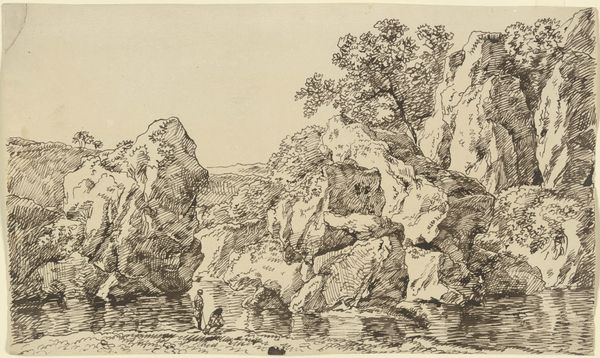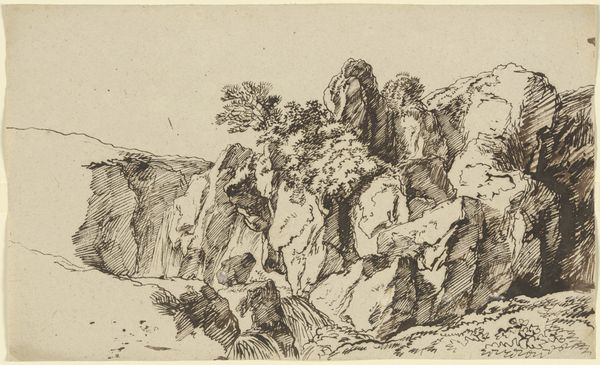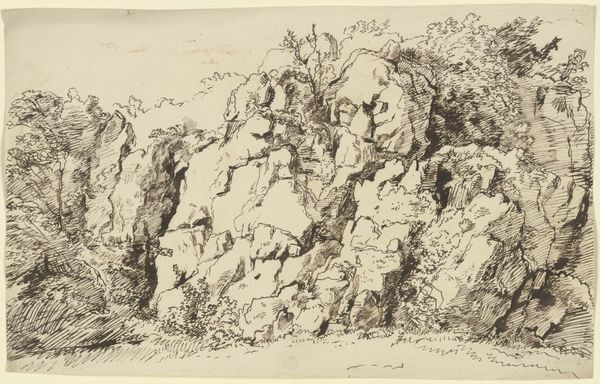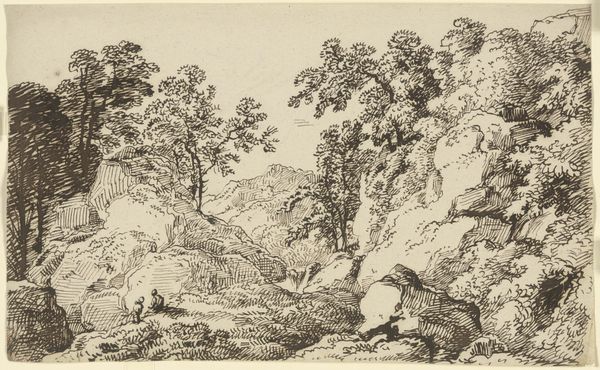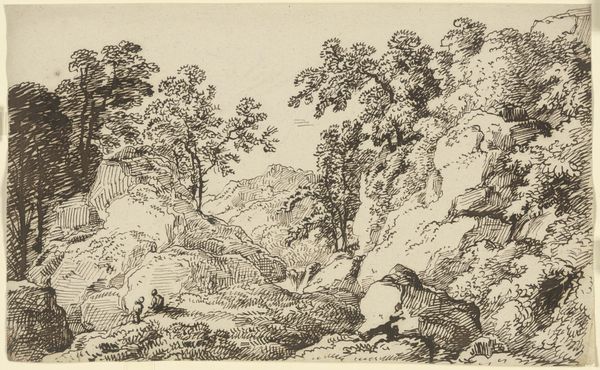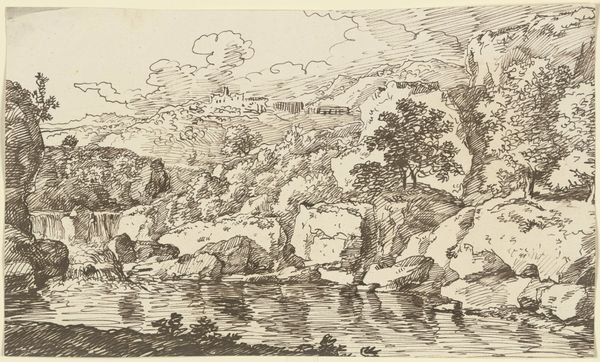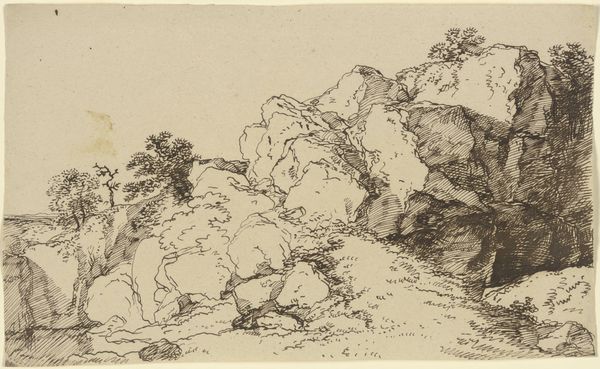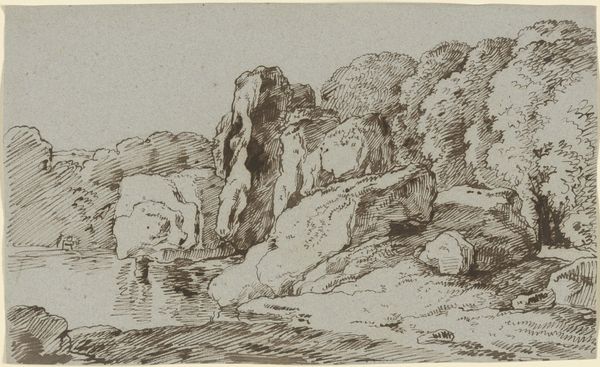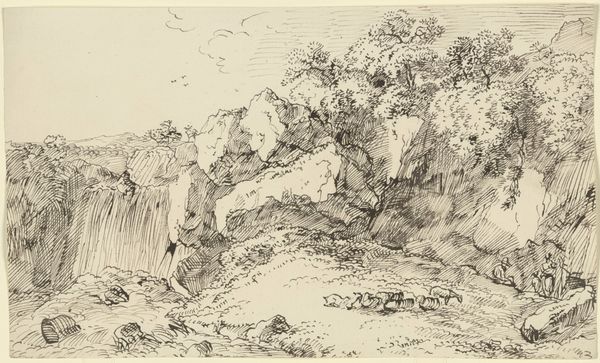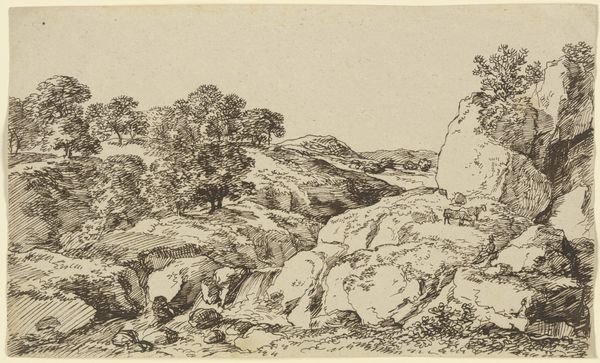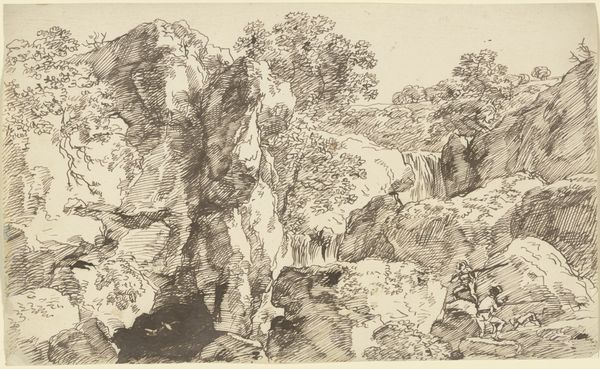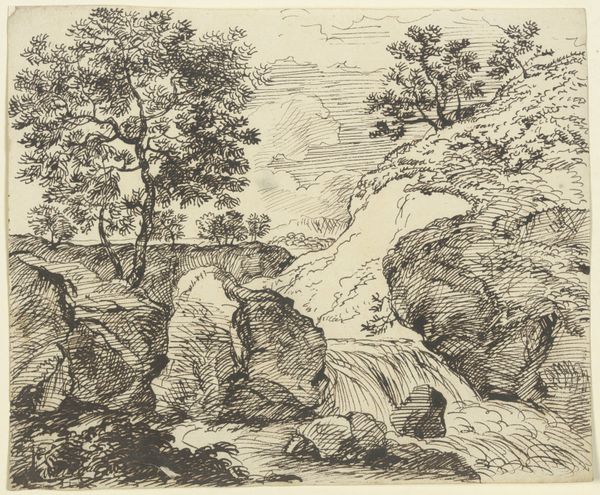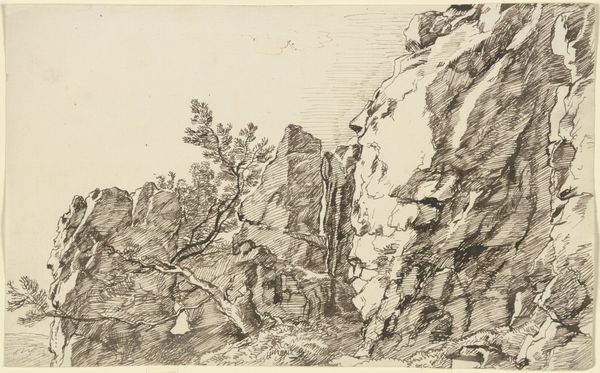
drawing, ink
#
drawing
#
landscape
#
ink
#
romanticism
Copyright: Public Domain
Curator: Here we have "Waterfall in a Mountain Landscape" by Franz Kobell. Rendered in ink on paper, this drawing is a wonderful example of Romantic landscape art. Editor: Immediately, I see a certain sublime quality—the detailed, almost obsessive, rendering of the rocks and foliage set against a boundless vista is incredibly striking. The texture alone creates a mood of intense immersion, inviting exploration. Curator: I'd agree. There is this feeling of both minuteness, as we observe all these distinct marks with the ink, but also vastness given how it depicts scale through spatial recession. The lone tree on the distant cliff is symbolic of nature's grandeur compared to human experience. What sociopolitical implications might exist around land? Editor: Land, yes. But for whom? It feels very male gaze in a sense; where the beauty in its details gets obscured. In terms of symbolism, beyond just romantic grandeur, waterfalls have often represented purification, transition, or the cyclical nature of life. I see parallels with certain rituals, particularly water rites found in various cultures. Is this landscape simply a beautiful view, or does it hold a deeper significance relating to societal reverence towards nature? Curator: That's a provocative question, and Kobell, I would say, seems conscious of landscape painting's ideological ties as a means to not only represent place but negotiate ideas around nationhood, belonging, and progress. Here, in the 18th-19th centuries, landscapes came to embody these loaded connotations regarding political and industrial revolutions. So whose interests does this artwork ultimately serve? Who gets represented in this beautiful landscape, and conversely, who does not? Editor: An incisive observation. This composition reminds us of that tension, presenting nature as both powerful and possibly dangerous. Think of the potential psychological implications—how the waterfall and sheer cliffs are perhaps evocative of the overwhelming forces in the natural world, as well as the societal constructs around it, where any wrong move can spell one's literal and social downfall. Curator: Considering Kobell’s landscape through the lens of history allows us to interrogate the romantic era and beyond, so while the ink strokes depict this visually enticing scenery, we understand its historical and theoretical underpinnings. Editor: And I see the possibility for viewers to contemplate the emotional resonance, to unpack its iconography and think beyond mere aesthetics.
Comments
No comments
Be the first to comment and join the conversation on the ultimate creative platform.
